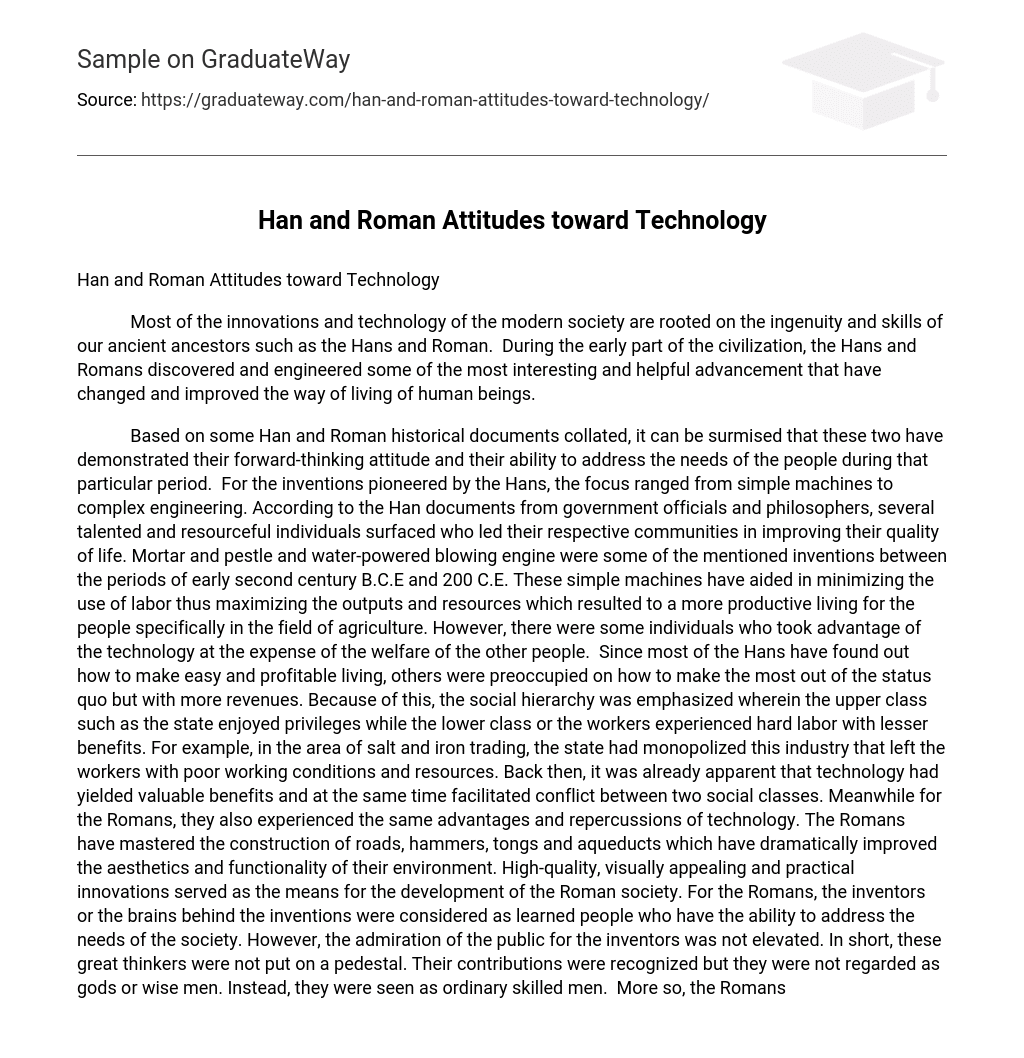Most of the innovations and technology of the modern society are rooted on the ingenuity and skills of our ancient ancestors such as the Hans and Roman. During the early part of the civilization, the Hans and Romans discovered and engineered some of the most interesting and helpful advancement that have changed and improved the way of living of human beings.
Based on some Han and Roman historical documents collated, it can be surmised that these two have demonstrated their forward-thinking attitude and their ability to address the needs of the people during that particular period. For the inventions pioneered by the Hans, the focus ranged from simple machines to complex engineering. According to the Han documents from government officials and philosophers, several talented and resourceful individuals surfaced who led their respective communities in improving their quality of life. Mortar and pestle and water-powered blowing engine were some of the mentioned inventions between the periods of early second century B.C.E and 200 C.E. These simple machines have aided in minimizing the use of labor thus maximizing the outputs and resources which resulted to a more productive living for the people specifically in the field of agriculture. However, there were some individuals who took advantage of the technology at the expense of the welfare of the other people. Since most of the Hans have found out how to make easy and profitable living, others were preoccupied on how to make the most out of the status quo but with more revenues. Because of this, the social hierarchy was emphasized wherein the upper class such as the state enjoyed privileges while the lower class or the workers experienced hard labor with lesser benefits. For example, in the area of salt and iron trading, the state had monopolized this industry that left the workers with poor working conditions and resources. Back then, it was already apparent that technology had yielded valuable benefits and at the same time facilitated conflict between two social classes. Meanwhile for the Romans, they also experienced the same advantages and repercussions of technology. The Romans have mastered the construction of roads, hammers, tongs and aqueducts which have dramatically improved the aesthetics and functionality of their environment. High-quality, visually appealing and practical innovations served as the means for the development of the Roman society. For the Romans, the inventors or the brains behind the inventions were considered as learned people who have the ability to address the needs of the society. However, the admiration of the public for the inventors was not elevated. In short, these great thinkers were not put on a pedestal. Their contributions were recognized but they were not regarded as gods or wise men. Instead, they were seen as ordinary skilled men. More so, the Romans particularly political leaders were apprehensive about the status of workers having vulgar occupations. According to Cicero, technology had in a way reduced the worth of a worker. Labor was more favored than skill because of the need to produce more outputs in exchange for more profits. As a consequence, the development of a worker was restricted which in a way have amplified the social hierarchy in the Roman society.
Overall, the Hans and the Romans seemed open to innovations and technology. Most of the people before the Common Era and during the Common Era were receptive to change but the drawback was that the workers who exerted effort in making these innovations function were the ones who experienced misfortunes. Moreover, in order to get a better understanding on the attitudes of the Hans and the Romans toward technology, historical documents that pertain to the reaction of the society on technology during that era are needed. Through this, the reader will be given an idea on how the majority accepted the innovations which would aid in formulating a comprehensive and substantial conclusion about the subject matter.





